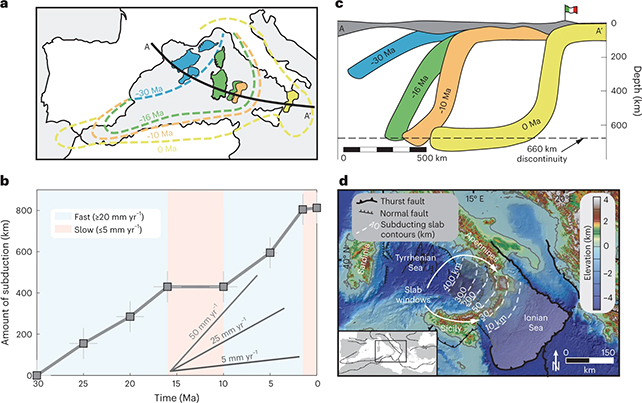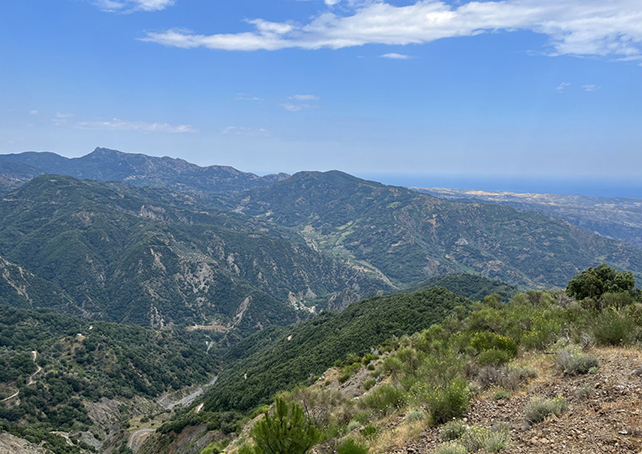Complex mountain ranges are formed as Earth's tectonic plates smash (very slowly) into each other: some of the planet's crust is pushed down below the surface, as other parts are thrust up to higher elevations. But that might not be the whole story.
In the mountains of Calabria in southern Italy, new field research suggests that deeper forces in Earth's mantle are responsible for driving some of the uplift we see on the surface, in addition to tectonic plate activity.
The Calabria region was used as a "geologic tape recorder" by the authors behind the new study, who analyzed the ages and chemical composition of rock layers to come up with a history of mountain uplift over 30 million years.

At some points in the past, that uplift was relatively slow, producing flat, high-elevation patches. At other times it was relatively fast, creating steeper segments. But overall it didn't fit well with the rates of tectonic plate subduction underneath the mountains. In fact, the crust activity seems to be a secondary factor here.
"Mountain building is a fundamental process of how Earth behaves, and this study suggests that we may not understand that as well as we thought we did," says Earth scientist Sean Gallen of Colorado State University.
Based on modeling of Earth's mantle and the convection currents inside it, the team thinks a convection cell could be responsible for the mountain building here. These cells happen when heat from Earth's core causes fluid magma in the mantle to move around in a circular pattern, impacting tectonic activity above.

While the models used involve a certain amount of assumption about what's going on beneath the ground, it seems that this is a likely explanation. More data obtained from tectonic plate movement, mountain uplift, and rock records should tell us more.
This part of the world is particularly suitable for a study like this because it's still geologically active, offering clues in the current landscape as to its past.
The study also combined numerous techniques, such as thermochronology and the record of past sea levels left behind in the rock, to go further back in time than previous methods.
"The results suggest that the typical way we view mountain building doesn't hold for southern Italy," says Gallen.
"It appears to be controlled by things that are much deeper within the Earth system. This behavior has been seen in models but never in nature. This is the first time we think we've observed it."
The researchers have made some of their bespoke modeling software available for other experts to use, and it's thought that the findings here could teach us more about mountain formation and elevation all across the world.
It's worth bearing in mind that a multitude of forces and factors are at play in mountain building, as revealed in previous studies. As well as tectonic activity, the presence of miniature organisms and weathering and erosion are also important.
Now attention has been drawn to forces deep below the surface of Earth. Expect more research to look in detail at how convection cells are influencing mountain growth, helping to form the vast landscapes we see today.
"I've been working in the Mediterranean for 15 years, and this result has profoundly changed the way I think about these subduction zones," says Gallen.
The research has been published in Nature Geoscience.
